Let’s face it, Central Texas has unpredictable winters. It seems that every 10 years or so we will get a killing freeze that separates the hardy palms from the non-hardy palms. Some non-hardy palms such as the Mexican Fan Palm will be damaged more often than that, and may or may not survive even a “normal” winter. There are palms that will survive all but the most brutal Central Texas winters, and I’d like to introduce you to them here.
What is our Hardiness Zone?
According to the USDA 2023 Hardiness Zone map, Central Texas is in Zone 8a. This means that palms with a Hardiness Zone of 8 or lower should survive the average low temperatures of 10°F to 15°F in our area. Of course, there are exceptions, as other factors enter into winter hardiness. A gradual cooling in the fall will prepare palms for mid-winter freezes. An early hard freeze may damage tissue that is not “hardened off” by gradual cooling. Palms that are stressed are also more susceptible to cold damage than healthy palms. Location also plays into hardiness, as our winter winds come from the NW, so planting in a SE exposure will give the greatest protection.
Which Palms are appropriate to plant in Central Texas?
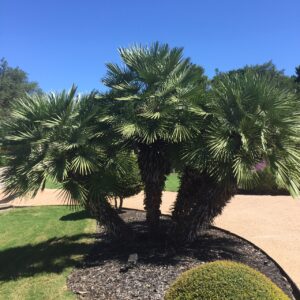
Mediterranean Fan Palm Chamaerops humilis
This multi-trunk fan palm is usually green with a silvery cast, though color may vary, as they are seed-grown. Typical height in Central Texas is 10′, with the width being about the same. These are slow-growing and good candidates for planting in containers. They are found on poor, rocky soils across its range and will tolerate a wide range of soil types as long as it is well drained. Zone 8.

Silver Mediterranean Fan Palm Chamaerops humilis var. cerifera
This hardy fan palm is native to the Atlas Mountains of Morocco. Slow growing with beautiful silver-blue foliage, this palm grows well in full sun and well-drained soil. It can readily be used as a specimen palm in the landscape. Zone 8
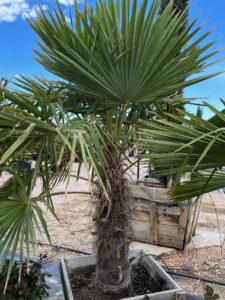
Windmill Palm Trachycarpus fortunei
I don’t think I have ever seen a Windmill Palm die from cold temperatures in Central Texas, unless it was already compromised before the freeze. These palms are slow growing but can (and do!) reach great heights in our area. They typically grow to 25′ but I have seen them grow to 40′ under the right conditions.
Windmill Palms are single-trunk palms with slim trunks covered with fiber that appear “hairy”. They are useful to plant in narrow areas where a wide trunk is not desired. I would caution against removing any leaves that are still green, even if they are “in your way”. The carbohydrates produced in these leaves build the caliper of the trunk at that location on the trunk. If leaves are removed before they are brown, then that location on the trunk will not gain caliper and as the palm grows upward and you can’t reach the leaves to remove them, there will be a “wasp waist” where the leaves were removed.
Windmill Palms are tolerant of part shade and adapt to a wide variety of soils as long as they are well-drained. Zone 8.
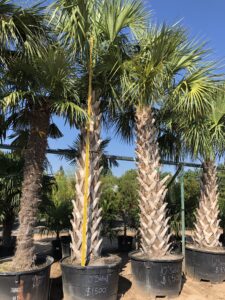
Florida Sabal Palm Sabal palmetto
Also known as Cabbage Palm, this is one of the most common native palms in the United States. It is slow growing to 40′ with a spread of 6′-8′. Sabal palms transplant well, but do not regenerate roots that are cut when digging them. They will only produce new roots from the base of the trunk. Removing leaves at the time they are dug increases survival rate after planting, so don’t expect these to have a full head of leaves when purchased. These palms vary in their persistence of the leaf bases, with some losing the “boots” fairly quickly and some shedding quickly. The Florida Sabal Palm has shorter petioles and a narrower trunk (14″-16″) than the Texas Sabal Palm, Sabal mexicana. Zone 8.

Dwarf Palmetto Palm Sabal minor
Dwarf Palmetto grows in the understory of woods across the southeastern United States. It can be found in the understory along streambeds in the Edwards Plateau. Slow growing to 5′-8′ x 4′-8′ and usually trunkless, this palm will tolerate poor drainage. While it needs water when newly planted, it is fairly drought tolerant once established. Be patient with this one, it is worth the wait! Zone 7.
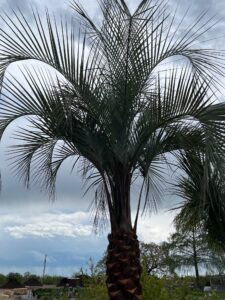
Pindo Palm Butia capitata
Also called Jelly Palm for its orange-yellow fruits that are used to make jelly, Pindo Palm is slow growing with a stocky trunk. Foliage is blue-green. Growing to 15′ tall and wide, the graceful fronds arch over and require a wide berth. It is often used as a specimen palm in the landscape. Zone 8.

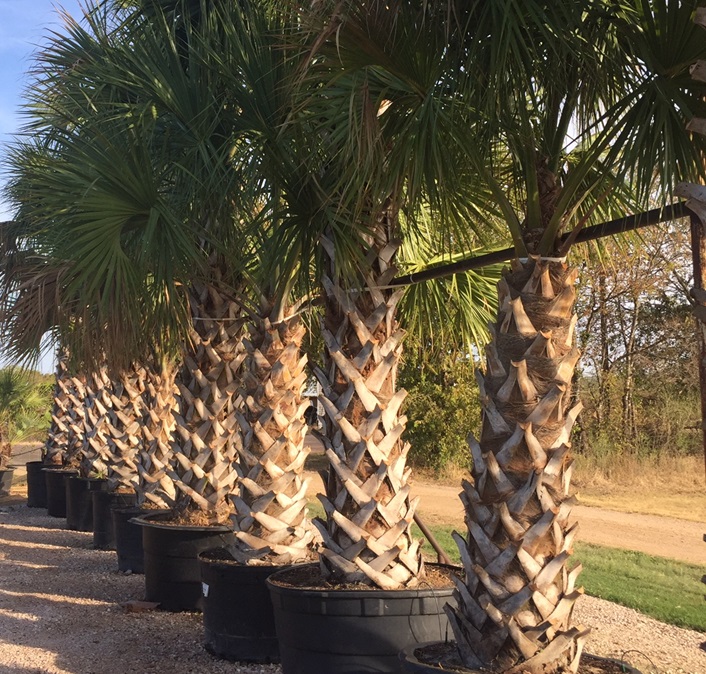
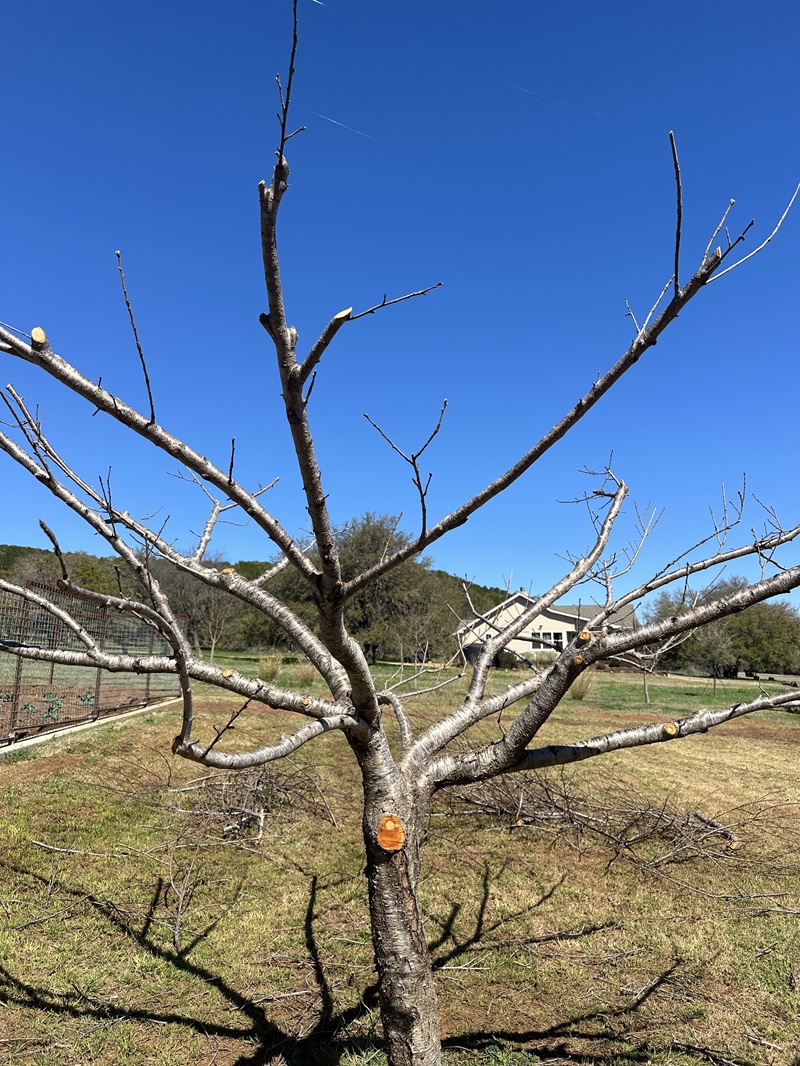
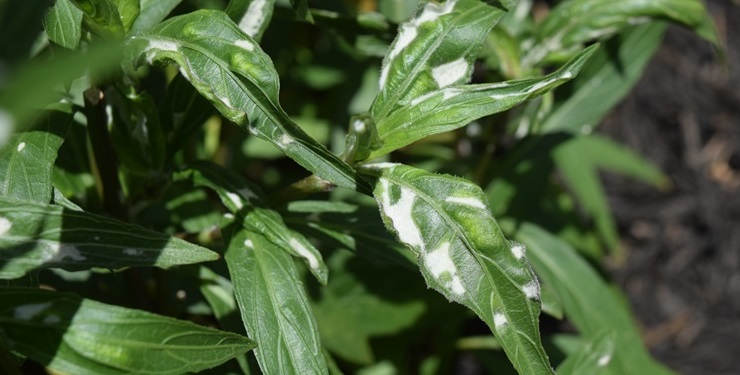
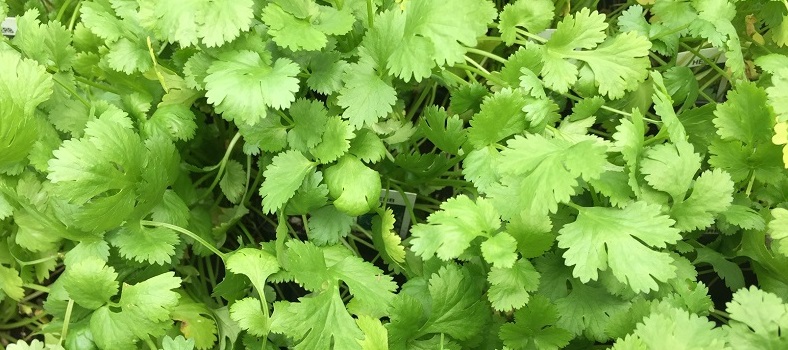
Leave A Comment